Introduction: Why Homemade Food Matters
The health of your nursing dog should never be compromised, and what better way to ensure top-notch nutrition than with Homemade Food for Nursing Dogs? With store-bought dog food often containing fillers and additives, making food at home for your nursing pooch gives you complete control over what she consumes. Read on for a comprehensive guide on the best ingredients, recipes, and tips to keep your nursing dog healthy.
Benefits of Homemade Food for Nursing Dogs
Nutrient-Rich Ingredients: Creating meals from scratch allows you to incorporate a range of fresh, nutrient-dense ingredients. This goes a long way in meeting the special dietary needs of nursing dogs.
No Artificial Additives: Store-bought dog food often contains artificial preservatives. With homemade food, you avoid these potentially harmful additives altogether.
Essential Nutrients for Nursing Dogs
Protein: Protein is critical for the proper development of puppies. Chicken, turkey, and lean beef are excellent sources.
Fats: Omega-3 and Omega-6 fatty acids help in the development of the puppies’ nervous system. Fish, flaxseed, and chicken fat can provide these essentials.
Vitamins & Minerals: Calcium and phosphorous are important for strong bones and teeth. Leafy greens, dairy, and fish are fantastic sources.
Top 3 Homemade Food Recipes for Nursing Dogs
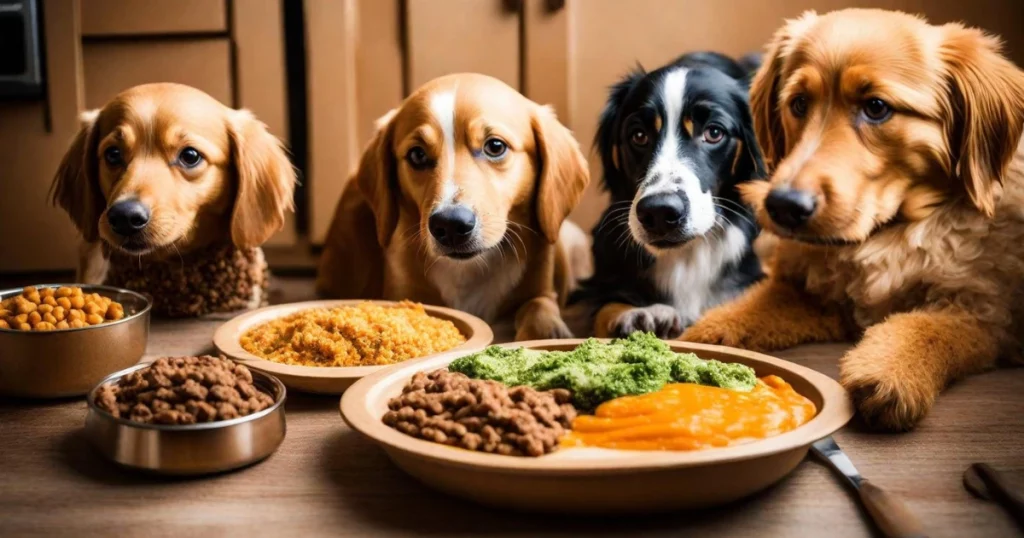
1. Chicken and Rice Delight
Ingredients:
- 1 cup cooked chicken (shredded)
- 1 cup cooked rice
- 1/4 cup carrots (chopped)
- 1/4 cup peas
Instructions:
- Mix all ingredients together.
- Serve at room temperature.
2. Beef and Vegetable Mix
Ingredients:
- 1 cup lean ground beef
- 1/2 cup sweet potatoes
- 1/4 cup green beans
- 1/4 cup carrots
Instructions:
- Cook beef thoroughly.
- Steam vegetables until soft.
- Mix and serve.
3. Fish Fiesta
Ingredients:
- 1 cup cooked fish (deboned)
- 1/2 cup cooked quinoa
- 1/4 cup zucchini
- 1/4 cup squash
Instructions:
- Combine fish and quinoa.
- Add steamed vegetables.
- Serve when cool.
Feeding Tips
- Consistency: Stick to a consistent feeding schedule. Nursing dogs need to eat more frequently.
- Portion Control: Too much of a good thing can backfire. Consult your vet for portion recommendations.
- Hydration: Always keep fresh water available for your dog. Proper hydration aids in milk production.
Consult Your Veterinarian
Before starting any homemade food regime, always consult your veterinarian for advice tailored to your dog’s needs. This ensures that your dog gets a balanced diet, meeting all nutritional requirements.
Additional Tips for Making Homemade Food
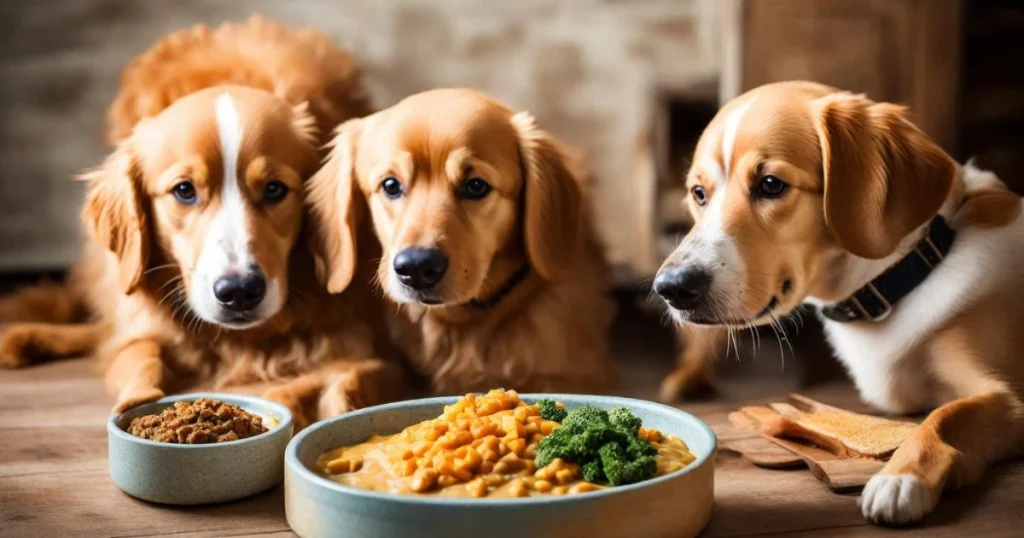
Storage Solutions: Keeping It Fresh
Making Homemade Food for Nursing Dogs in large batches can save you time, but storing it properly is crucial for maintaining its nutritional value. Consider investing in airtight containers for refrigeration or even using vacuum-sealed bags for longer freezer storage. Remember, freshness is key!
Nutritional Supplements: The Cherry on Top
Even though Homemade Food for Nursing Dogs is a fantastic way to control the nutrients your nursing dog gets, sometimes, it might lack certain micronutrients. Discuss with your vet about incorporating appropriate supplements like fish oil capsules for Omega-3 fatty acids or a multivitamin mix specifically designed for nursing dogs.
Avoiding Allergens: Safety First
Food allergies can affect dogs just like humans. Watch out for signs of allergies such as skin irritation or digestive issues. Among the frequent offenders are dairy, beef, and poultry. If in doubt, have an allergy test conducted by your veterinarian.
Common Mistakes to Avoid

Overcooking Protein
While it’s important to ensure that meat is cooked thoroughly to kill off bacteria, overcooking can reduce its nutritional value. Be mindful of cooking times and temperatures.
Skipping the Greens
Some pet owners focus too much on protein and carbs, neglecting the benefits of vegetables. Leafy greens contain essential minerals and vitamins that should not be overlooked.
Ignoring Hydration
Homemade foods, especially those based on meat, can be rich and salty. It’s crucial to balance this out by ensuring that your nursing dog has constant access to clean water.
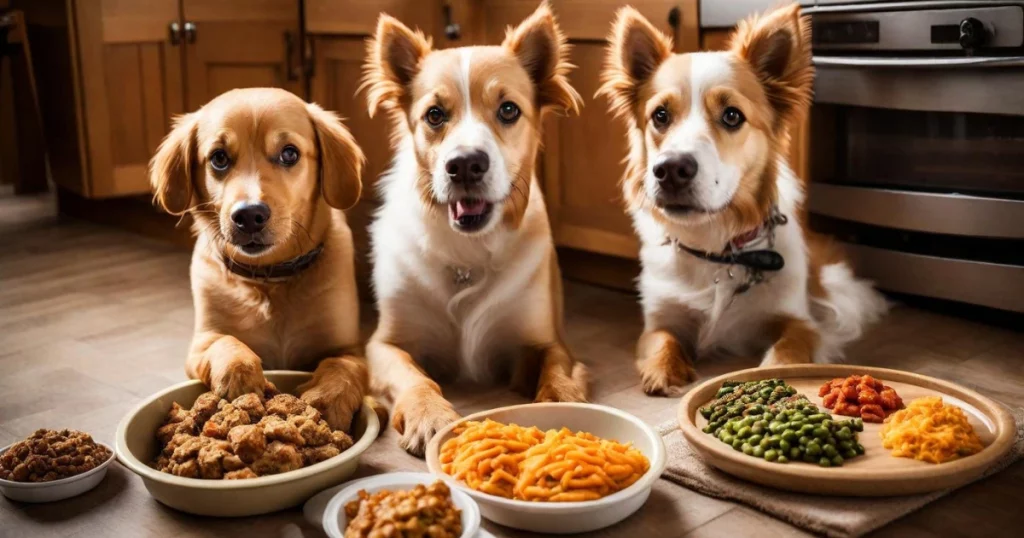
FAQs: Quick Answers to Your Burning Questions
Q: Can I mix homemade food with store-bought food?
A: Yes, but make sure to do it gradually to avoid gastrointestinal issues. Also, consult your vet for the best approach.
Q: How often should I feed my nursing dog?
A: Nursing dogs need more frequent meals—up to 4 times a day. Consult your vet for specific recommendations.
Q: What about treats?
A: Treats should not make up more than 10% of your dog’s daily caloric intake. Opt for healthy homemade treats like sweet potato chips or small bits of lean meat.
Alternatives to Traditional Protein Sources
Plant-Based Options
Protein does not always need to come from animal products. Chickpeas and lentils are two other legumes that are great sources of protein. Just be sure to cook them thoroughly and consult your vet before introducing any new food types into your dog’s diet.
Eggs: A Nutritional Powerhouse
Eggs are an excellent source of vital fatty acids, digestible protein, and amino acids. They can be a fantastic substitute for meat in your Homemade Food for Nursing Dogs recipes, or even just an addition. Remember, always cook the eggs completely to eliminate the risk of salmonella.
The Role of Carbohydrates
While a lot of emphasis is placed on proteins and fats, carbohydrates are equally important, providing the essential energy that a nursing dog needs. Brown rice, sweet potatoes, and oats are great choices that offer not just energy but also fiber, which aids in digestion.
Special Considerations for Nursing Dogs
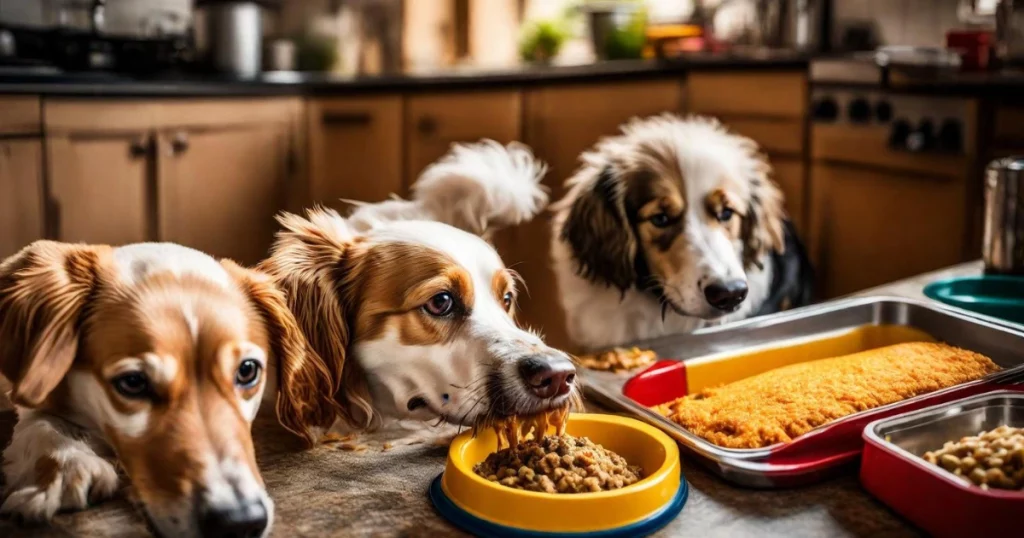
Caloric Intake
A nursing dog’s caloric needs are significantly higher than a non-nursing dog. In some cases, caloric intake may need to double. Always consult your veterinarian to determine the correct amount of calories your dog needs.
Hydration is Key
A nursing dog needs to produce milk for her puppies, and this requires her to be well-hydrated. Ensure constant access to clean, fresh water.
Monitoring and Adjusting the Diet
After you’ve made the transition to Homemade Food for Nursing Dogs, closely monitor your dog’s weight, energy levels, and overall health. Small adjustments might be needed, and regular vet check-ups will help you make data-backed decisions.
Other Articles
- Baby Animal Names
- A Beginner’s Guide to Go Solutions Dog Food Feeding
- Is Showtime Dog Food Good?
- Unleash the Style: Choosing the Perfect Beaded Dog Collar
- A Beginner’s Guide to the Calmer Collar for Dogs
Why Not Raw?
While a raw food diet might seem natural and beneficial, it comes with risks such as bacterial infections from uncooked meat and the potential for an imbalanced diet. Always consult your vet if you’re considering this option.
Recap: The Ultimate Checklist for Homemade Food for Nursing Dogs
- Consult Your Vet: Always your first step before making any dietary changes.
- Choose Quality Ingredients: Opt for nutrient-rich, fresh produce.
- Focus on Balanced Nutrition: Ensure a good mix of proteins, fats, and carbs.
- Monitor for Allergies: Keep an eye out for any adverse reactions.
- Portion Control: Even too much of a good thing can be harmful.
- Storage: Keep food as fresh as possible.
- Hydration: Never underestimate the importance of clean, fresh water.
By adhering to these guidelines and equipping yourself with the right knowledge, you’re on the path to providing the best possible nutrition for your nursing dog. In the end, a well-fed, healthy dog is a happy dog, and what more could a pet owner ask for?
The Final Word: The Power of Homemade
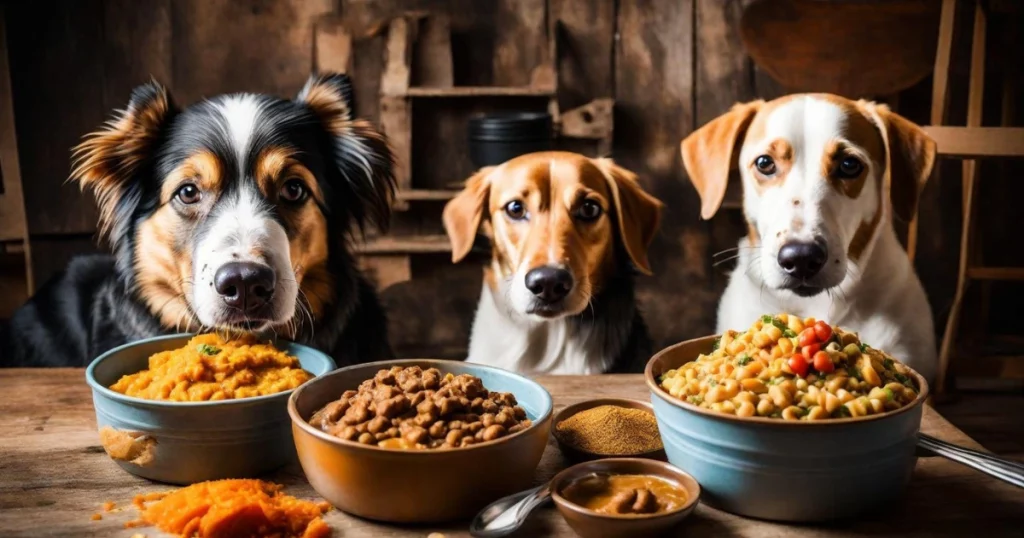
The benefits of serving homemade food to your nursing dogs are numerous: enhanced nutritional control, absence of artificial additives, and the sheer joy of eating something made with love. With our comprehensive guide and recipes, your nursing dog will receive the best nutrition, ensuring a healthy, happy future for both mom and puppies.
It bears repeating: before making any major dietary changes for your pet, always consult your veterinarian. After all, a pound of cure is worth an ounce of prevention.
Choosing to prepare homemade food for dog for your nursing dog offers numerous benefits that extend beyond mere nutrition. It allows you the opportunity to express love and care in the most primal way possible—through food. And let’s face it, our pets are family, and they deserve the best we can offer.
Conclusion
Preparing homemade food for nursing dogs is not just a loving gesture but a step towards ensuring their optimal health. With the right mix of proteins, fats, and vitamins, you can help your nursing dog stay energetic and provide nourishing milk for her puppies.
FAQs
| Question | Answer |
|---|---|
| Q1: Can I use any type of meat for my homemade dog food? | A1: It’s best to use lean meats like chicken, turkey, or lean beef. Always cook the meat thoroughly to eliminate any bacteria. |
| Q2: Is it safe to give dairy products to my nursing dog? | A2: While some dogs can tolerate dairy, others may be lactose intolerant. Consult your vet before including dairy in your dog’s diet. |
| Q3: How often should I feed my nursing dog homemade food? | A3: Nursing dogs may require more frequent meals, up to 4 times a day. Always consult your vet for specific recommendations. |
| Q4: Can I use seasonings in homemade dog food? | A4: Avoid using seasonings like garlic, onion, or excessive salt, as these can be harmful to dogs. |
| Q5: How long can I store homemade dog food in the fridge? | A5: Homemade dog food can be stored in the fridge for up to 5 days. For longer storage, consider freezing it. |
| Q6: Can I include fruits in my dog’s homemade diet? | A6: Yes, fruits like apples and blueberries can be a healthy addition but avoid grapes and citrus fruits, which are toxic to dogs. |
| Q7: Are grains like rice and oatmeal safe for nursing dogs? | A7: Yes, grains like brown rice and oatmeal are safe and provide essential energy and fiber. However, ensure they make up a balanced part of the overall diet. |
| Q8: What supplements can I add to my dog’s homemade food? | A8: Consult your vet for specific recommendations on supplements, such as multivitamins or fish oil capsules for Omega-3 fatty acids. |
| Q9: Can I feed my dog a vegetarian or vegan diet? | A9: While possible, a vegetarian or vegan diet for dogs requires careful planning to ensure it meets all nutritional needs. Consult your vet before making this change. |
| Q10: Can I mix homemade and store-bought dog food? | A10: Yes, but do it gradually to avoid gastrointestinal issues. Also, consult your vet for the best approach to mixing diets. |

